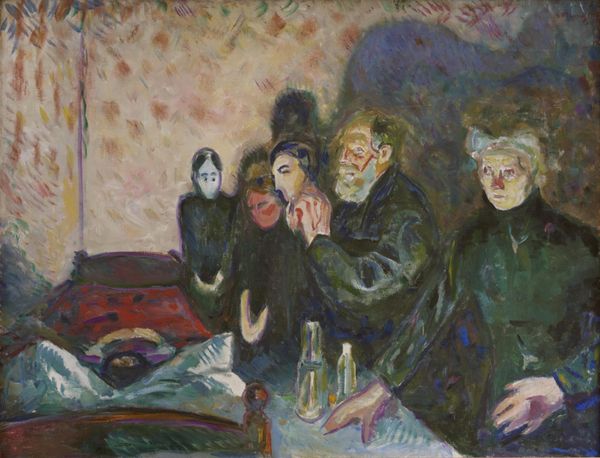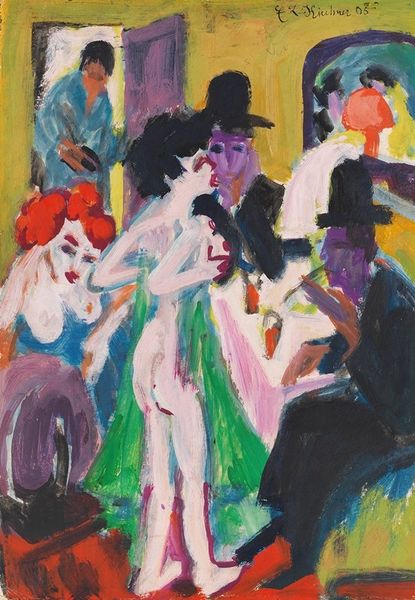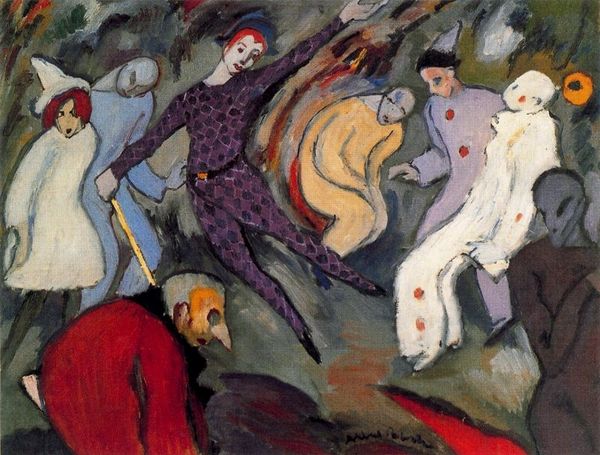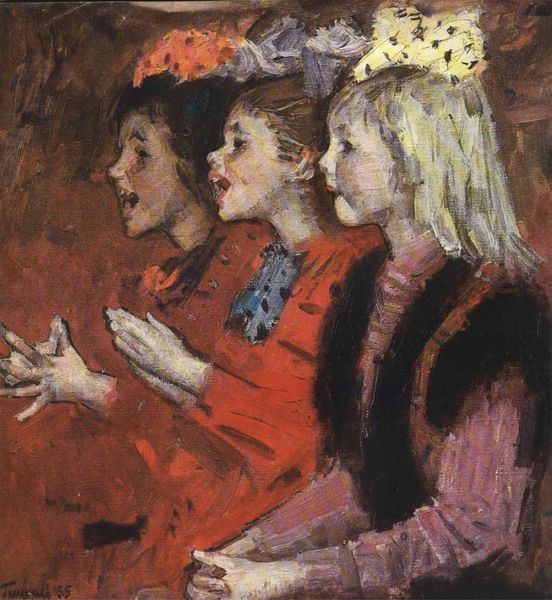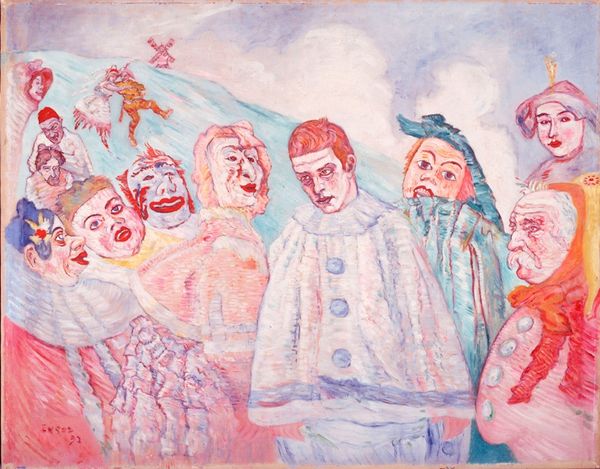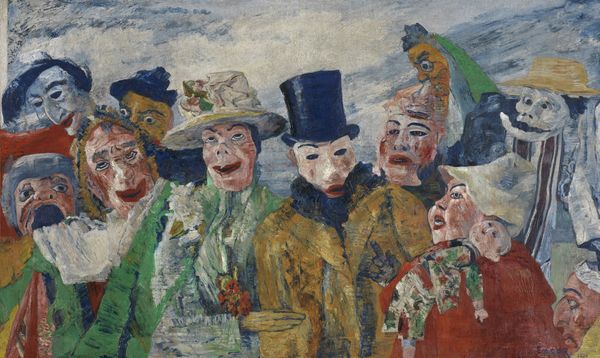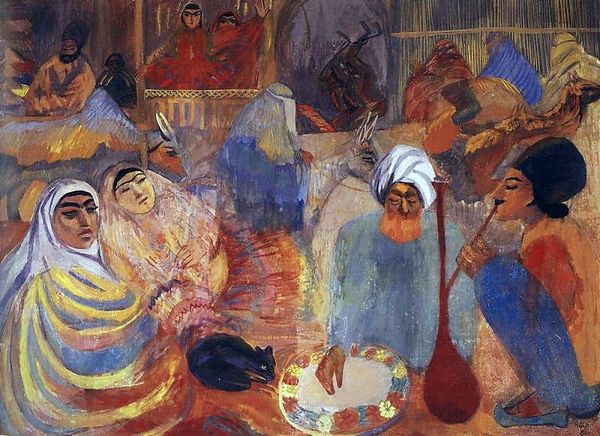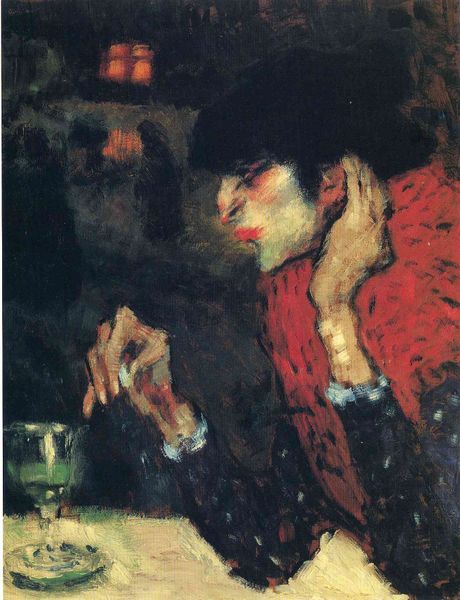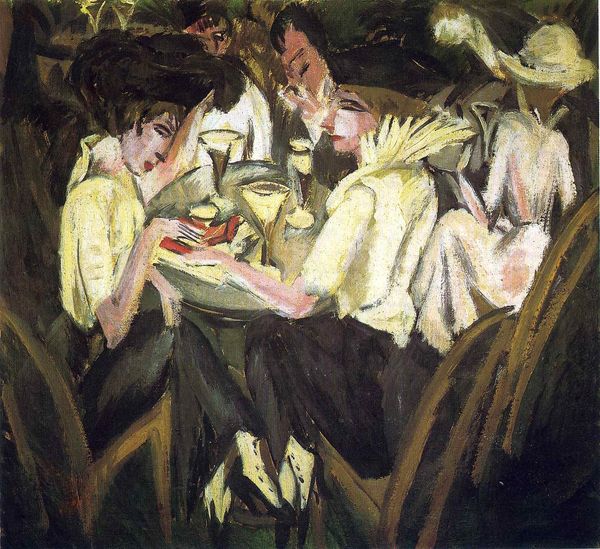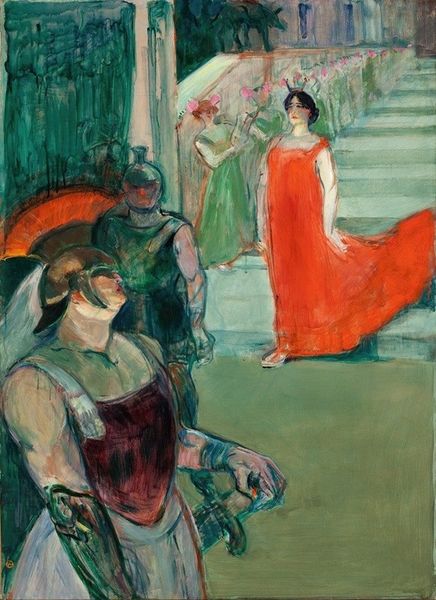
painting, oil-paint
#
portrait
#
narrative-art
#
painting
#
oil-paint
#
oil painting
#
vanitas
#
neo expressionist
#
group-portraits
#
expressionism
#
genre-painting
#
portrait art
Copyright: Public domain
Editor: Here we have James Ensor's "The Great Judge," painted in 1898 using oil paint. What strikes me most is the nightmarish quality of these masked figures. There’s a real sense of unease. What's your interpretation? Curator: Ensor was deeply critical of the Belgian bourgeoisie and social institutions. This painting isn't simply a depiction of a carnival. Instead, it's a potent commentary on authority and judgment. Notice how the figures are crowded together, almost suffocating each other? And what do you make of their masks? Editor: They seem to represent conformity, hiding individuality? The skeletal figure in the center is unsettling and appears to be the judge that the title refers to. Curator: Precisely. Ensor often used masks and skeletal figures to expose hypocrisy and corruption. "The Great Judge" in this context isn't necessarily dispensing justice but presiding over a scene of societal decay. Think about the context: late 19th-century Europe was a time of immense social and political upheaval, which impacted Ensor. He was making a powerful statement about who holds power, and for whose benefit? Does the chaotic arrangement undermine the supposed authority of this "judge?" Editor: Absolutely, there's nothing orderly or dignified about this. It challenges the viewer to consider who are the true arbiters of justice and what disguises do they wear. How does the painting's style influence its message? Curator: Ensor's loose, expressive brushwork, combined with the grotesque imagery, amplifies the feeling of societal decay and moral ambiguity. He uses the visual language of Expressionism to undermine the self-assuredness of established power. He wasn't just painting a scene; he was launching a socio-political critique. Editor: I see it now, thanks for elucidating that. It's a stark indictment of societal values, revealing a deeper critique of power structures disguised by appearances. Curator: Indeed. Art can sometimes act as a mirror reflecting the hidden realities within a culture. This experience helped me focus on visual storytelling to impact societal dialogue.
Comments
No comments
Be the first to comment and join the conversation on the ultimate creative platform.

